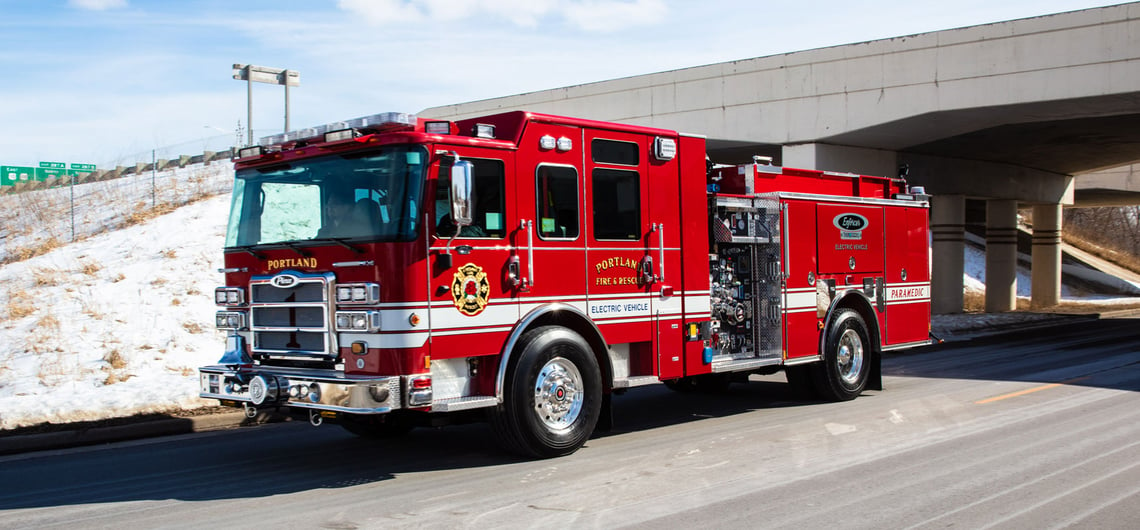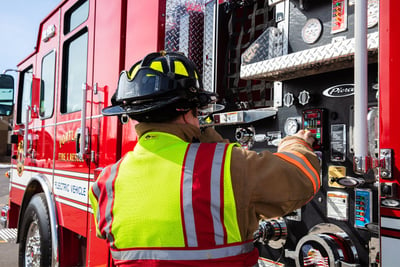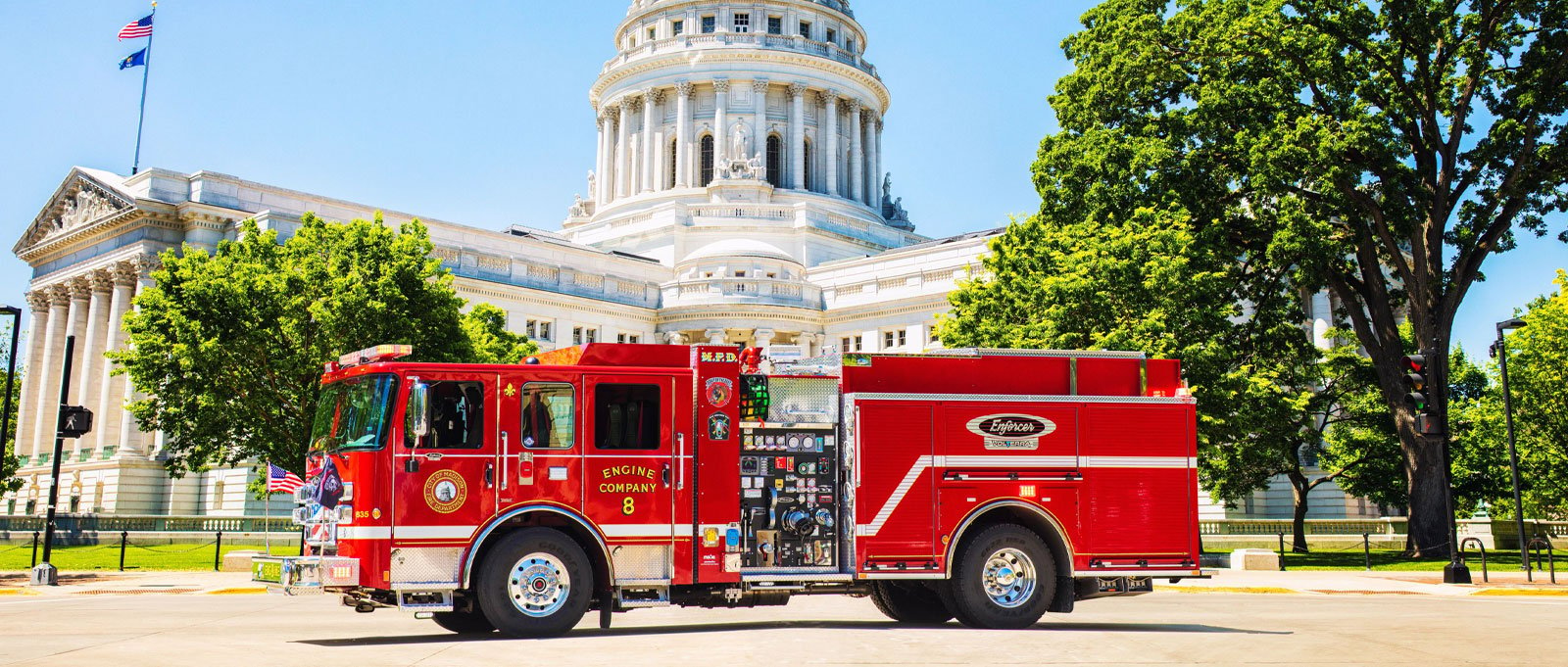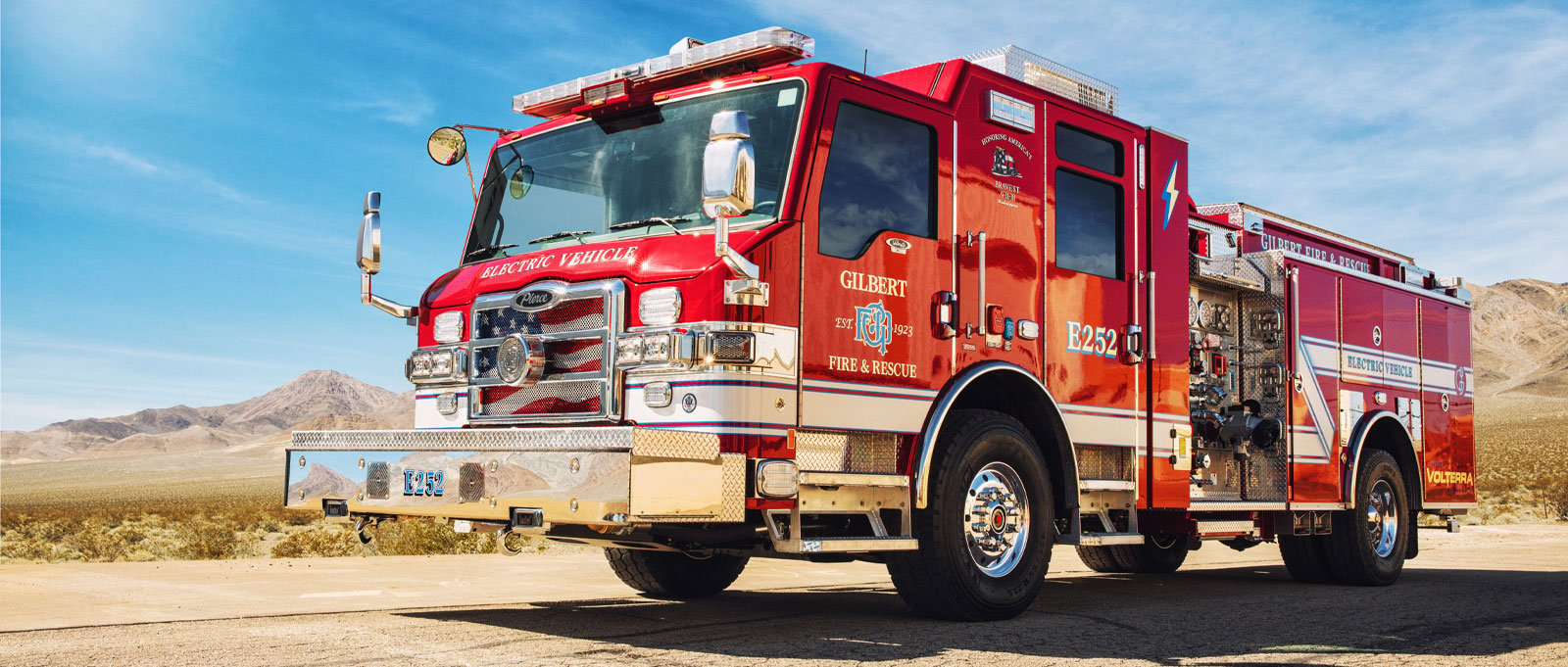
How do electric fire trucks manage cold weather?
It’s a question fire departments in cold climates are wondering as the demand for zero-emission fire trucks increases.
Below, we review several facts and challenges in regard to the management of electric fire trucks in cold weather climates.
Fact: Fire Stations Are Heated
Fire stations serve as crucial hubs for firefighters and emergency response vehicles. In cold weather climates, fire station bays are constructed to maintain a consistently warm environment for idle vehicles and equipment. This prevents water within the fire trucks from freezing and provides a comfortable working environment for fire service personnel. Fortunately, this also supports normal operating conditions required by electric-powered fire engines and their batteries.
So how do electric fire trucks respond? Keep reading to learn more.
Challenge: How do Electric Fire Trucks Perform in Cold Weather?
 It is critically important electric fire engines are reliable and responsive in cold temperatures.
It is critically important electric fire engines are reliable and responsive in cold temperatures.
The Pierce® Volterra™ electric fire truck is equipped with a sophisticated thermal management system to counteract the adverse effects of low temperatures on the battery. The system includes a coolant loop which circulates around the battery area, and a small electric heater. During cold weather months, the coolant is heated to prevent the battery from falling below a certain temperature threshold to ensure optimal performance functionality.
Moreover, the Pierce Volterra electric fire truck constantly monitors the warming process, records the battery's temperature and adjusts the heating system as needed. This careful management of the coolant circulation ensures the battery remains within the optimal temperature range.
In the summer, the system operates inversely. The coolant is run through a radiator, similar to a conventional car, to prevent the battery from overheating. If temperatures rise excessively, the cooling system is employed to cool the batteries to maintain a consistent battery temperature.
Example: Madison, Wisconsin Electric Fire Truck
 The Pierce Volterra EV placed in service for the City of Madison Fire Department in Madison, Wis. in 2019, offered a good illustration of how the electric fire truck thermal management system works to protect the batteries.
The Pierce Volterra EV placed in service for the City of Madison Fire Department in Madison, Wis. in 2019, offered a good illustration of how the electric fire truck thermal management system works to protect the batteries.
- The average daily temperature from November through March is 38 degrees Fahrenheit (3 degrees Celsius.)
- In January, the average daily temperature dips to 21 degrees Fahrenheit (-6 degrees Celsius.)
Despite the cold, Madison’s Pierce Volterra EV performance output remained strong.
See what a day in the life of an electric fire truck looked like in Madison, Wisconsin.
Fact: An Electric Fire Truck Thermal Management System is Always Engaged
To ensure optimal battery performance, the Pierce Volterra’s EV thermal management system monitors battery temperature at all times. Irrespective of whether the engines are idling in the station or responding to an emergency in frigid temperatures, the thermal management system ensures optimal battery temperature and performance.
The ability of Pierce Volterra’s EV thermal management system to effectively regulate the battery’s temperature is pivotal to keeping the electric fire truck operational.
The battery thermal management system supports immediate operational readiness and contributes to extending battery life expectancy.
Example: Warm Weather Climate Electric Fire Truck
 A similar scenario occurs for electric fire trucks engaged in warm-weather service. In warmer climates, the thermal management system is designed to minimize the effects of excessive heat. Instead of heating the coolant circulating around the batteries, the system focuses on cooling it down. This helps maintain a consistent temperature that optimizes battery performance.
A similar scenario occurs for electric fire trucks engaged in warm-weather service. In warmer climates, the thermal management system is designed to minimize the effects of excessive heat. Instead of heating the coolant circulating around the batteries, the system focuses on cooling it down. This helps maintain a consistent temperature that optimizes battery performance.
The Gilbert Fire and Rescue Department Station No. 2 in Gilbert, Arizona, also has a Pierce Volterra pumper in service. Gilbert’s arid, subtropical climate, intense heat during summer months and high UV index are not issues for the Pierce Volterra EV’s thermal management system.
Placing electric vehicles in stations with extreme climates helps Pierce gain feedback for continuous system improvements as more departments integrate electric vehicles into their fleets.
Fact: Fire Trucks are Not Typically Exposed to Harsh Temperatures for Long Periods
Regardless of whether they serve and protect in snowy or desert conditions, fire trucks are not typically subjected to prolonged periods in harsh temperatures. Even if an apparatus encounters extended emergency response calls in challenging conditions, the sophisticated thermal management system is designed to support and maintain a consistent battery temperature, regardless of ambient outdoor temperature.
While the fire trucks may face adverse conditions, the advanced thermal management technology mitigates any potential issues that extreme temperatures may bring.
Pierce Manufacturing has been a leader in fire apparatus technology since it began more than 100 years ago. The push for green technology was fueled from within the organization as it began to focus on more environmental sustainability manufacturing and in reaction to global shifts in green-powered energy requirements.
With the introduction of the Pierce Volterra platform of electric vehicles, Pierce is proud to meet the needs of your fire department while providing advanced technology designed to support environmentally conscious initiatives.
You can learn more about the Pierce Volterra electric fire truck from your local dealer, or you can review our additional articles below:
- Electric Fire Truck Reference Guide
- Pierce Volterra EV: Coolest Thing Made in Wisconsin and Popular Mechanics feature
- The Story Behind the Technology